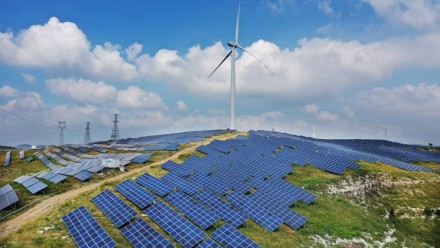How China could be carbon neutral by mid-century
China, the world’s largest emitter of carbon dioxide, has promised to become carbon neutral before 2060, and to begin cutting its emissions within the next ten years.
President Xi Jinping made the ambitious pledge to a virtual audience of world leaders at a meeting of the United Nations General Assembly last month. The news came as a surprise to many researchers, even in China, who weren’t expecting such a bold target. It’s the country’s first long-term climate goal, and will require China to rein in CO2 and probably other greenhouse gas emissions to net zero, which means offsetting gases that are released, for example by planting trees or capturing carbon and storing it underground.
In the wake of the announcement, Nature explores several proposals from influential research groups that work closely with the government for how China could reach neutrality before 2060. The plans differ in their details, but agree that China must first begin to generate most of its electricity from zero-emission sources, and then expand the use of this clean power wherever possible, for example switching from petrol-fuelled cars to electric ones. It will also need technologies that can capture CO2 released from burning fossil fuels or biomass and store it underground, known as carbon capture and storage (CCS).
Read the full article on the Nature website, featuring Prof Frank Jotzo











